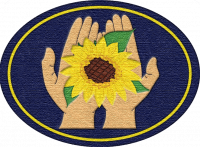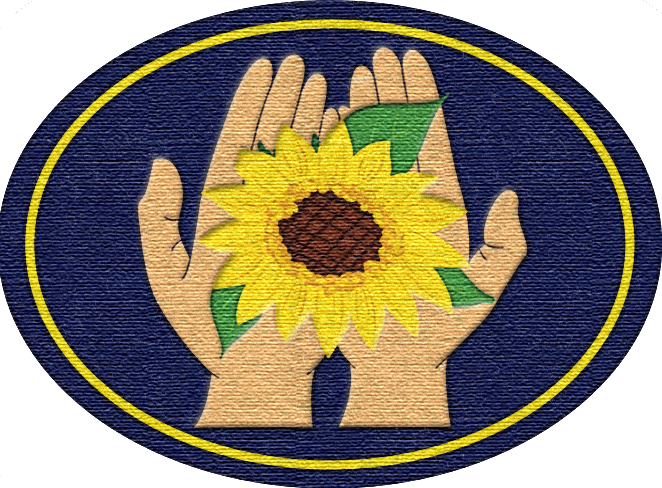AY Honor Invisible Disabilities Answer Key
1
For tips and instruction see Disability Awareness Australia.
2
In simple terms, an invisible disability is a physical, mental, or neurological condition that is not visible from the outside, yet can limit or challenge a person’s movements, senses, or activities.
Many people have a non-visible condition or experience a combination of both visible and non-visible conditions. These disabilities can be temporary, situational or permanent. They can be neurological, cognitive and neurodevelopmental as well as physical, visual, auditory and include sensory and processing difficulties.
They can also be respiratory as well as chronic health conditions such as arthritis and diabetes, chronic pain and sleep disorders.
An estimated 1.3 billion people worldwide or 1 in 6 people have a disability. In Australia it is estimated around 90% of people with a disability live with an invisible disability.
3
Examples: Air, germs, viruses, emotions, infra-red, UV rays, gravity, temperature, trust, God, angels.
4
The sunflower is an internationally recognised symbol for invisible disabilities. Wearing a lanyard with the sunflower helps people at participating venues to be aware that a person has an invisible disability and may need some additional time, patience and understanding.
Unfortunately, people often judge others by what they see and conclude a person can or cannot do something by the way they look. This attitude can be equally frustrating for those who may appear unable but are perfectly capable, as well as those who seem able, but are not.
4a
Wearing the sunflower symbol can help to make the invisible visible. It can allow the wearer to have more confidence while wearing the sunflower and presents opportunities for conversations, understanding, acceptance and support.
4b
The sunflower provides a way to indicate to others that there is a disability so that conversations can occur, and people can listen to how they can help rather than judge by what they see. It is a way for the invisible to become visible.
5
Sensory processing disorder (SPD) is a condition that affects how your brain processes sensory information (stimuli). There are seven senses: Tactile (touch), Gustatory (taste), Visual (sight), Olfactory (smell), Auditory (hearing), Vestibular (balance and movement) and Proprioception (the body’s ability to sense movement, action, and location).
SPD can affect all your senses, or just one. SPD usually means you’re overly sensitive to stimuli (sensory seeking) that other people are not. But the disorder can cause the opposite effect, too. In these cases, it takes more stimuli to impact you (sensory seeking).
SPD is not currently recognised as an official medical diagnosis but can accompany other disorders like autism or attention deficit and hyperactivity disorder, anxiety, OCD, dyslexia, MS.
Some suggested activities are listed below – feel free to add others.
| TOUCH | Compare different textures e.g fabrics, slime, playdough, sand paper, orbeez, mud, sand/sensory sand, bubble wrap, etc. |
| TASTE | Compare chewy, crunchy, dry, soft and moist foods | Blow bubbles | Blow a paper ball or a feather |
| SMELL | Try alerting scents to stimulate e.g. citrus, peppermint | Use scented play dough | Bring in different herbs and/or spices to be smelled |
| HEARING | Choose an appropriate word and repeat ten times | Clapping | Read out loud as you write | Listen to music |
| SIGHT | Wear dark glasses | Use a kaleidoscope | Watch a sunset | Use an oil timer or sand art |
| VESTIBULAR | Spinning | Sitting on an exercise ball | Jumping on a trampoline | Swinging | Walking in a figure of 8 pattern |
| PROPRIOCEPTIVE | Crawling | Sucking yoghurt/custard through a straw | Chewing/blowing bubbles | Tight (bear) hugs | Jumping on a trampoline |
6
Learning disabilities are disorders that affect the ability to:
- Understand or use spoken or written language
- Do mathematical calculations
- Coordinate movements
- Direct attention
Learning disabilities occur in very young children although they are not usually noticed until the child reaches school age – and sometimes many years into schooling.
| DYSLEXIA | A specific learning disability that affects reading and related language-based processing skills |
| DYSCALCULIA | A specific learning disability that affects a person’s ability to understand numbers and learn maths facts |
| DYSGRAPHIA | A specific learning disability that affects a person’s handwriting ability and fine motor skills as well as their ability to transfer ideas to text |
| DYSPRAXIA | A disorder which causes problems with movement and coordination, language, and speech |
| DYSPHASIA | A language disorder that affects the ability to produce and understand spoken language |
| AUDITORY PROCESSING DISORDER | A problem in the way hearing and the brain work together to understand sound |
| EXECUTIVE FUNCTIONING | Affects planning, organisation, strategizing, attention to detail and managing time and space |
7
Pathfinders can use research vía books and internet, or personal conversation with a person with the chosen disability. Having a person with a disability speak with your club/group is a great way to learn.
Possible disabilities examples: Autism, MS, Epilepsy, Anxiety, Diabetes, ADHD, asthma. There is a growing list to pick from.
- Autism (Autism Spectrum Disorder/ASD) is a neurological disorder. Autism affects how a person thinks, feels, interacts with others and experiences their environment. It is a lifelong disability. Each autistic person is unique – that is why autism is considered a spectrum.
- Autism is frequently linked with physical, developmental and/or mental health challenges. These may include intellectual disability, epilepsy, ADHD, Dyspraxia, anxiety, depression or gastro-intestinal issues.
- Aspect Australia
- Epilepsy is a long-term brain condition where a person has repeated seizures (fits). It is thought to affect about 3 in every 100 Australians.
- The symptom of epilepsy is seizures (fits). These are episodes of changed electrical activity in the brain and can vary a lot depending on the part of the brain involved.
- Seizures can cause symptoms like loss of consciousness (passing out), unusual jerking movements (convulsions) as well as other unusual feelings, sensations and behaviours.
- There are many different types of seizures. Generalised seizures involve the whole brain and so the whole body is affected. Focal seizures involve only part of the brain.
- Most people with epilepsy can control their seizures with antiepileptic medicines and by avoiding triggers.
- Information about epilepsy
7a
7b
- How the chosen disability affects those who have it.
- Other conditions that are linked or are more likely to occur alongside the chosen disability.
- What aspects of Pathfinders a person with that disability might find challenging.
8
Disability inclusion means understanding the relationship between the way people function and how they participate in society, and making sure everybody has the same opportunities to participate in every aspect of life to the best of their abilities and desires.
Centers for Disease Control and Prevention
8a
Inclusivity starts with education. Understanding and acceptance. How do we treat people with disabilities? Do we make assumptions based on what we see? Do we believe people who tell us about their disability?
8b
What language do we use when we talk with and about people with disabilities? When speaking about groups or activities do we talk in a way that includes people of all abilities? Are we open and comfortable to talk about disabilities?
8c
Here are a few texts, there may be others.
- Galatians 3:28
- Ephesians 4:32
- Philippians 2:3-4
9
This exercise allows Pathfinders to look at a familiar story with a new set of eyes around disabilities. We do not know if these people had a disability.
- Luke 8:45-48 - Jesus heals a woman bleeding for 12 years.
- Exodus 4:10 - is commonly understood to imply that Moses had a speech impediment.
- Some assume that Zacchaeus was a little person.
References
- Australian Union Steps to Christ Honor
- Hidden Disabilities Sunflower
- What you need to know about invisible disabilities
- Invisible Disabilities Association
- How Invisible Disability Affects Mobility
- Sensory Processing Disorder
- What is stimming?
- Learning disabilities



